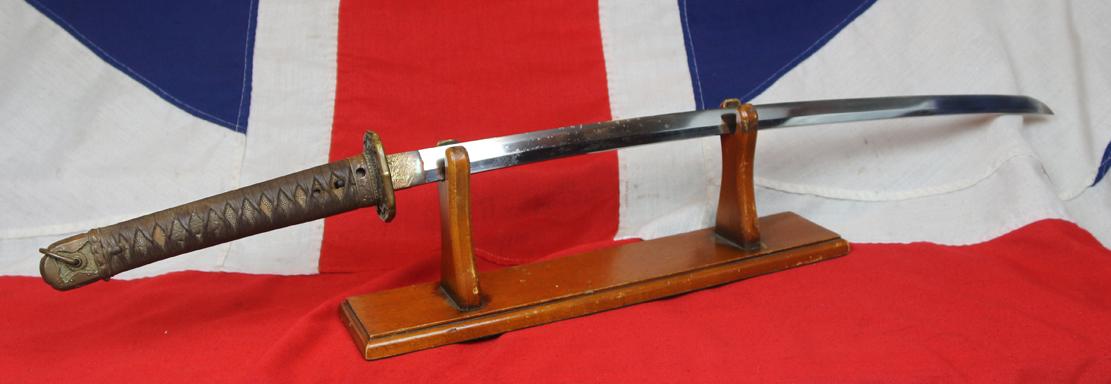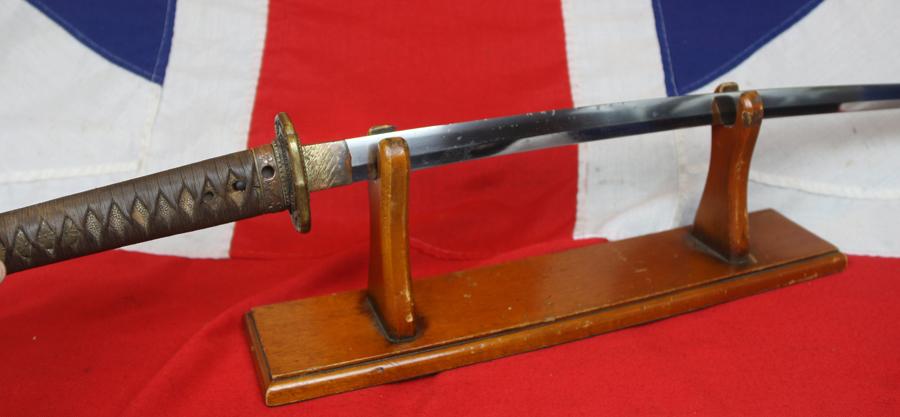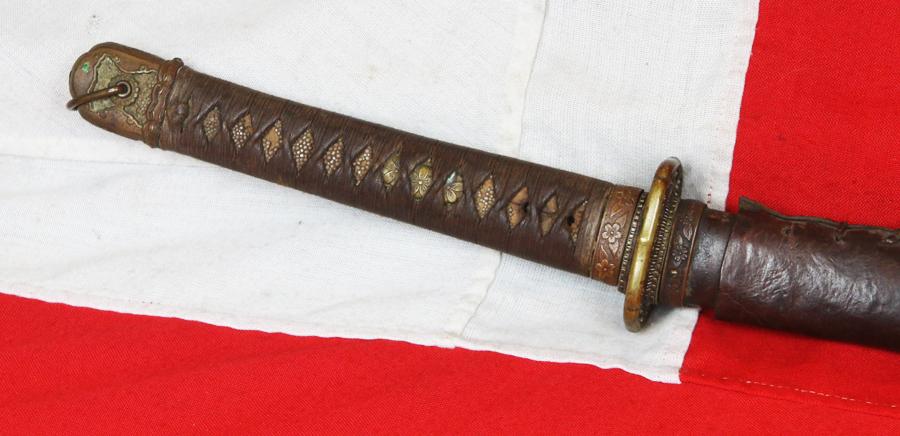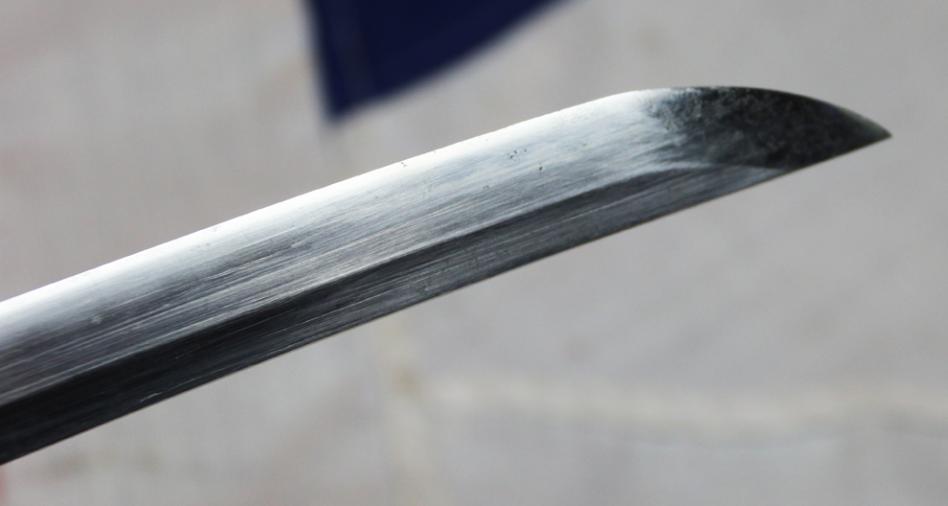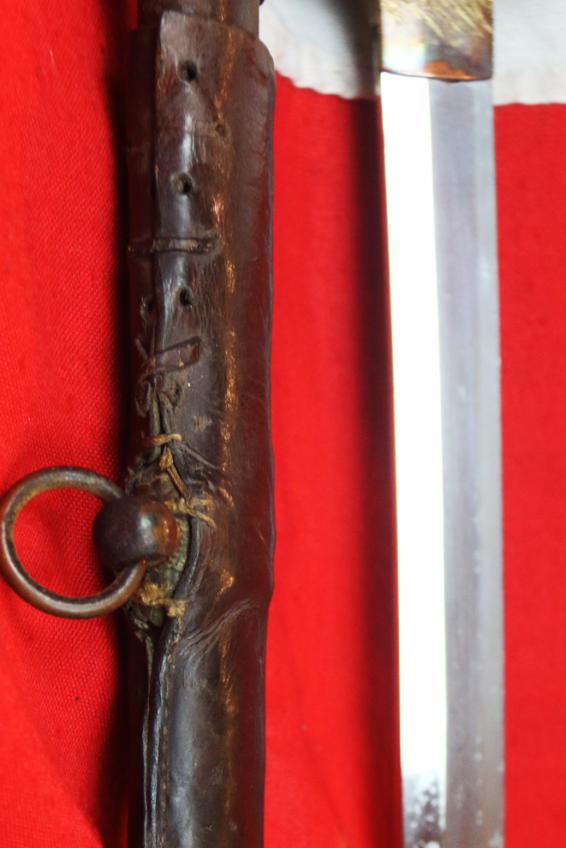A Japanese WW2 Officer’s Katana With a Circa 450 year old Antique Ancestral Blade, and Type 94 Military Mounts
It has lain untouched since its return as a trophy of war in 1945. Combat covered saya, regulation type 94 shingunto military mounts, leather combat covered steel scabbard, tsuka and tsuba. Koto to early shinto blade with good undulating notare hamon, in 85% original polish, just a finger marks and light surface scratching. Very elegant typical koto period blade style. Gold covered habaki with engraved oblique raindrop pattern.
During the Meiji period, the samurai class was gradually disbanded, and the Haitorei Edict in 1876 forbade the carrying of swords in public except for certain individuals such as former samurai lords (daimyōs), the military and police. Skilled swordsmiths had trouble making a living during this period as Japan modernised its military and many swordcsmiths started making other items such as cutlery. Military action by Japan in China and Russia during the Meiji Period helped revive the manufacture of swords and in the Showa period (1926–1989) before and during World War II swords were once again produced on a large scale.
During the pre World War II military buildup and throughout the war, all Japanese officers were required to wear a sword. Traditionally made swords were produced during this period but, in order to supply such large numbers of swords, blacksmiths with little or no knowledge of traditional Japanese sword manufacture were recruited. In addition, supplies of the type of Japanese steel (tamahagane) used for sword making were limited so several other types of steel were substituted. Shortcuts in forging were also taken, such as the use of power hammers and tempering the blade in oil rather than hand forging and water tempering; these measures created swords without the usual characteristics associated with Japanese swords.
however, families of great standing or with samurai backgrounds and ancestry were permitted to allow their son's to wear military mounted swords but containing ancient ancestral blades, usually of great significance to the family's history. this is one of those swords. it was once estimated only 1 in 100 had such historical swords to carry in combat, while serving their divine emperor Hirohito in WW2.
The Type 94 shin gunto ( kyuyon-shiki gunto) officers' sword's mounts replaced the Western style kyu gunto mounts in 1934. It had a traditionally constructed hilt (tsuka) with ray skin (same) wrapped with traditional silk wrapping (ito). No locking button. A cherry blossom (a symbol of the Imperial Japanese Army) theme was incorporated into the guard (tsuba), pommels (fuchi and kashira), and ornaments (menuki).
The scabbard for the Type 94 was made of metal with a wood lining to protect the blade, and the option of adding a combat leather cover, or, a wooden scabbard covered with combat leather. It was often painted brown and was suspended from two brass mounts, one of which was removable and only used when in full dress uniform. The fittings on the metal scabbard were also decorated with cherry blossom designs. Blade 27.5 inches long tsuba to tip, overall 39.5 inches long
Code: 23908



